What Is a Curved Linear Strip Ceiling?
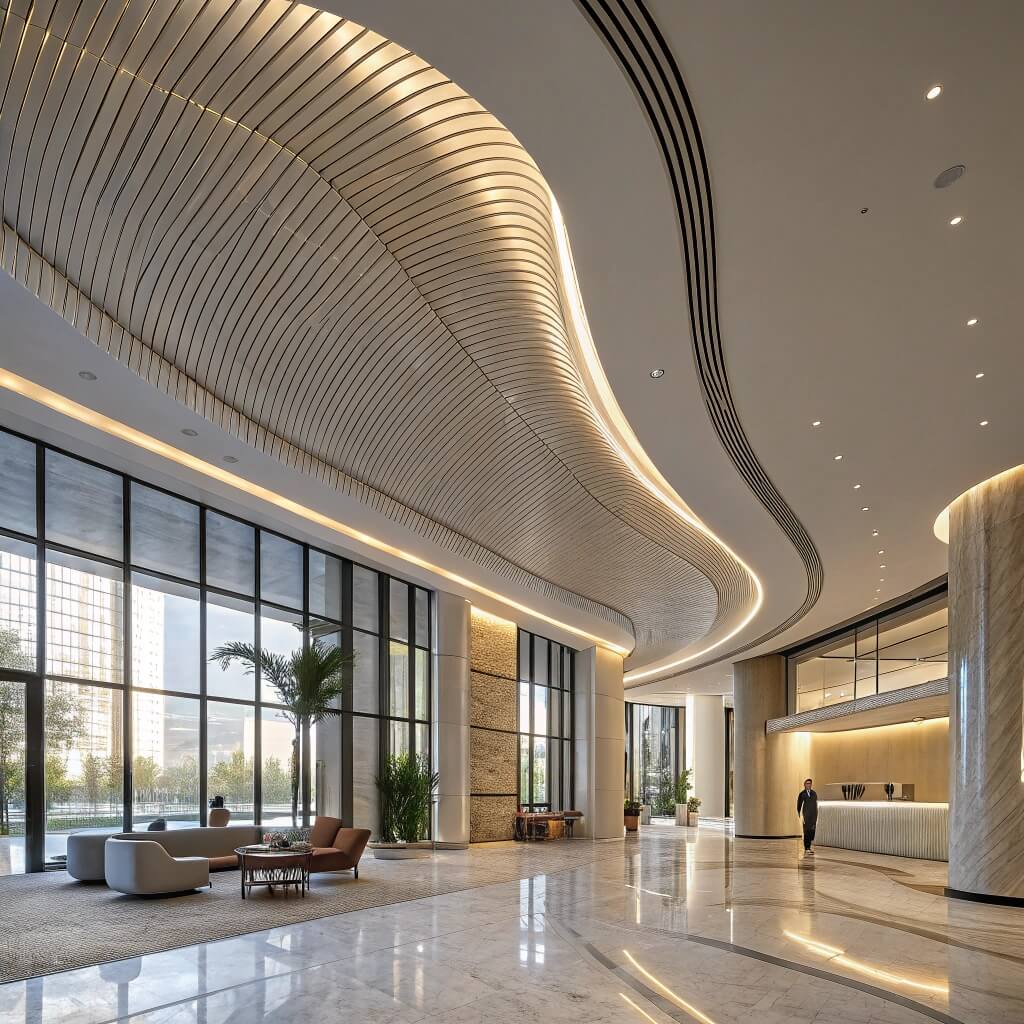
A flat ceiling is boring—but when you want your ceiling to add movement and flow, curved linear strip ceilings become your secret weapon. They combine aesthetics with acoustic function.
A curved linear strip ceiling is a suspended ceiling system made from aluminum strips bent into soft curves. It’s modern, flexible, and enhances the spatial feeling of a room.
This ceiling style isn’t just eye-catching. It can hide ducts, improve acoustics, and guide movement in large spaces. Let’s explore more about its parts and definitions.
What is a curved edge ceiling called?
When a ceiling has soft, rounded transitions instead of sharp corners, it gives a space a fluid and elegant feel. These types are especially popular in modern design and commercial interiors.
A curved edge ceiling is typically referred to as a “cove ceiling” or “radius ceiling.” These designs create smooth transitions between ceiling and wall or between ceiling levels.
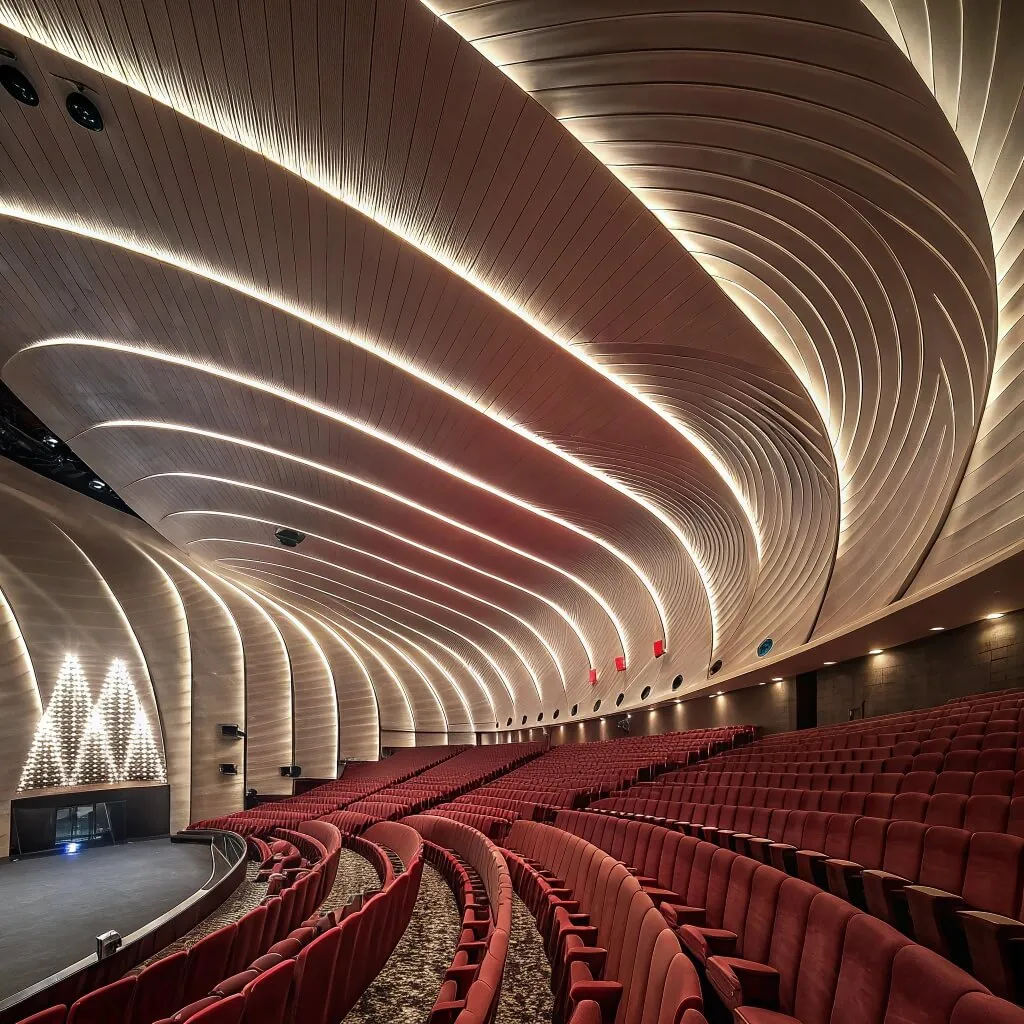
Curved ceilings go beyond simple visual appeal. They solve functional issues like airflow and light distribution. Designers often use them in theaters, airports, or lobbies where form must follow function.
Common Types of Curved Ceilings
| Type | Description | Application Area |
|---|---|---|
| Cove Ceiling | Gentle curve between ceiling and wall | Residential, Offices |
| Radius Ceiling | Curved in plan or section view | Auditoriums, Hotels |
| Barrel Vault | Continuous curve across a room | Museums, Churches |
These designs use materials like aluminum or gypsum, but for modular and quick installation, aluminum strip systems are the most efficient. In our factory at sinoextrud, we often recommend curved linear systems to clients seeking both beauty and flexibility.
What is linear ceiling?
Some ceilings are all about straight lines and clean repetition. That’s where linear ceilings come into play. They’re loved for their tidy look and easy installation.
A linear ceiling is a ceiling made from long, narrow panels—usually metal—arranged in parallel lines. It gives a modern, structured, and spacious feel.
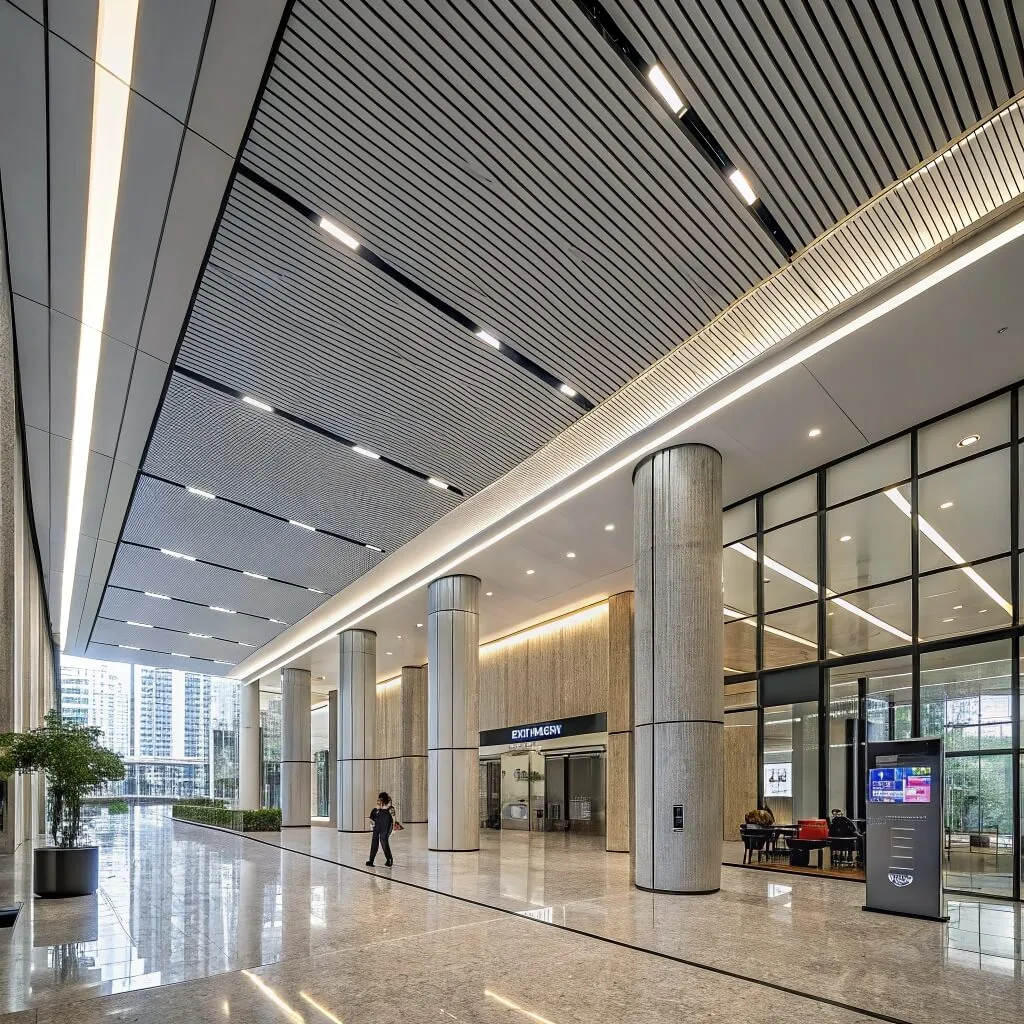
Linear ceilings are ideal in commercial buildings, transport hubs, and retail environments. Their strip layout improves airflow and hides MEP systems while keeping maintenance easy.
Key Features of Linear Ceilings
| Feature | Benefit |
|---|---|
| Continuous Lines | Enhances spatial direction |
| Open or Closed Style | Customizable for airflow and lighting |
| Acoustic Add-ons | Reduces echo in large rooms |
| Multiple Finishes | Woodgrain, matte, metallic, powder coat |
I often see clients like Daniel Lim in Singapore request linear ceilings for large public projects. They want fast installation, precise tolerances, and good acoustic properties—all achievable with our extrusion and surface treatment tech.
What is a curved ceiling called?
Curved ceilings are more than just a look—they bring dynamics to an otherwise flat surface. They’re often used to soften a space and direct the eye naturally across a room.
A curved ceiling can be called a barrel ceiling, vaulted ceiling, or arched ceiling, depending on its shape and curvature direction.
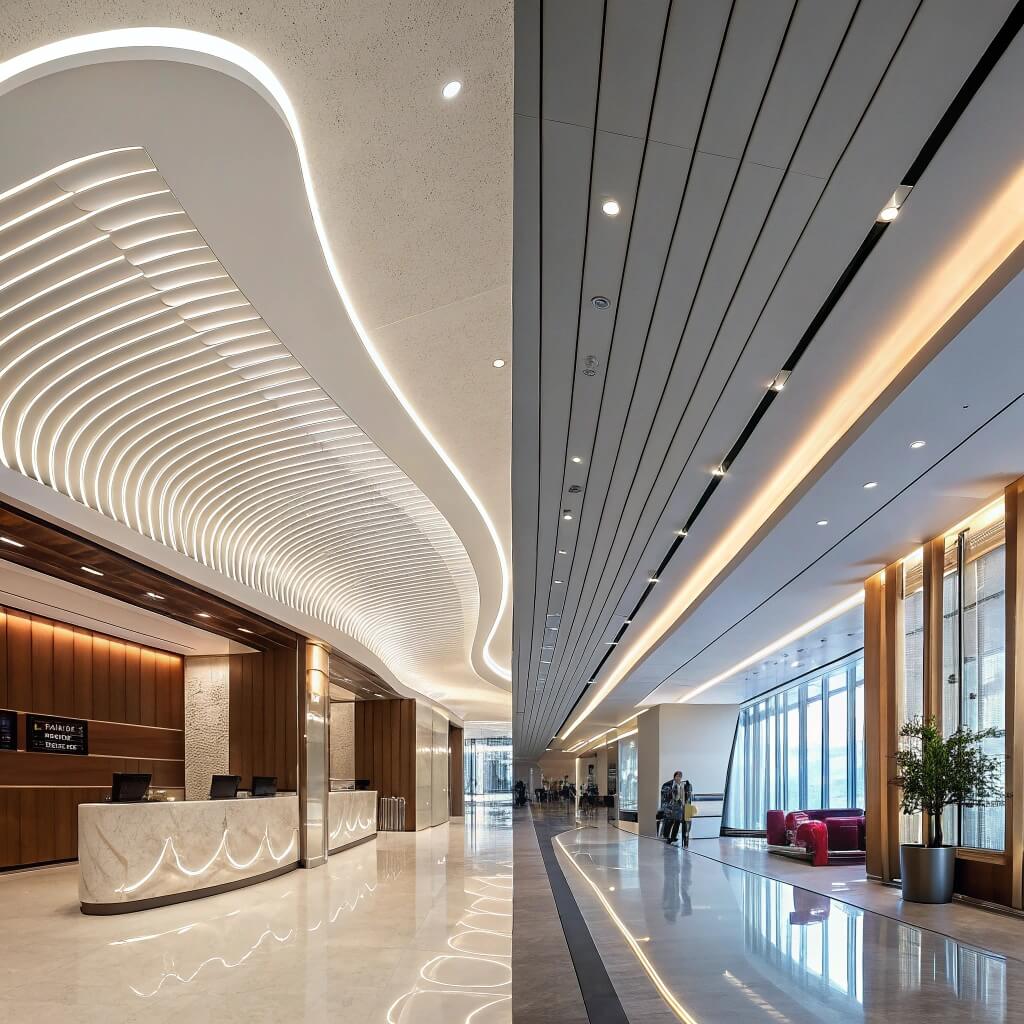
Here’s how to tell them apart:
Types of Curved Ceilings
| Name | Curve Direction | Looks Like | Common Use |
|---|---|---|---|
| Barrel Vault | Horizontal span | Half-cylinder | Museums, Corridors |
| Dome Ceiling | Curved in all directions | Hemisphere or oval | Religious buildings, Hotels |
| Wave Ceiling | Undulating multiple curves | Flowing wave | Modern commercial interiors |
We often help architects like Emily Garcia from the U.S. who want custom curved ceilings with intricate surface finishes. For them, a standard ceiling just won’t do. They need sustainable materials and precise design control, which we can offer with our in-house customization and fast prototyping.
What is strip ceiling?
Strip ceilings are the foundation of many modern metal ceiling systems. They’re versatile, durable, and allow endless design configurations with little waste or fuss.
A strip ceiling is made from long metal slats or strips fixed to a supporting frame, forming a uniform or decorative ceiling finish.
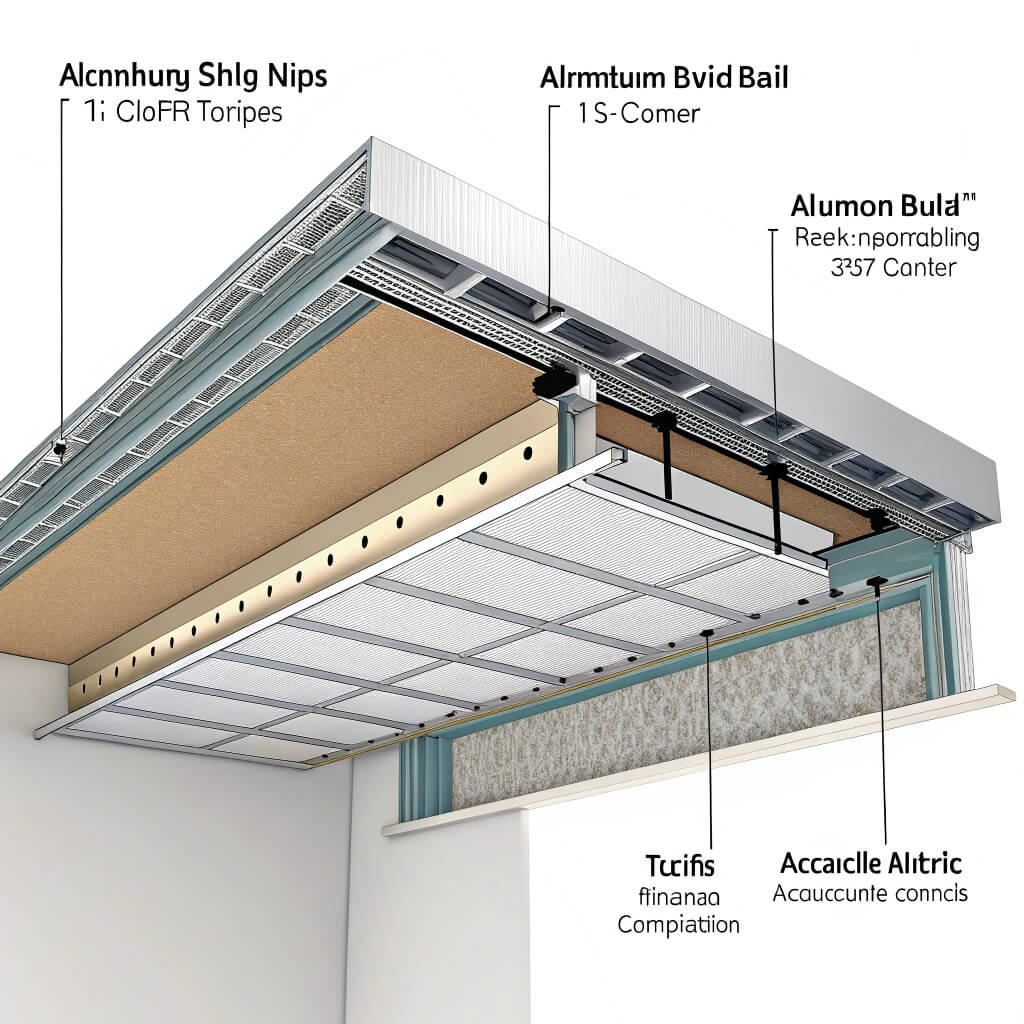
At its core, a strip ceiling system includes:
- Aluminum strips (often 50mm to 200mm wide)
- Carrier rail systems (T-grids or suspension bars)
- Optional acoustic fabric or back panels
Benefits of Aluminum Strip Ceilings
| Advantage | Why It Matters |
|---|---|
| Light but strong | Easier to install, less load on structures |
| Fire resistant | Improves safety in public buildings |
| Easy to maintain | Dust-free and mold-resistant |
| Modular | Allows for easy access to utilities |
In our factory, strip ceilings are one of our top sellers. Japanese clients like Kenta Yamamoto value high consistency and precise finishes. Our extrusion line guarantees tight tolerances, while our surface treatments like anodizing or wood grain printing make the panels stunning and long-lasting.
Conclusion
Curved linear strip ceilings combine the visual flow of curves with the structure of linear systems. They’re perfect for designers who want beauty, performance, and practicality all in one.



